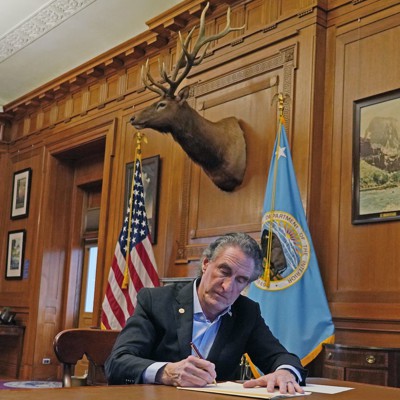The Trump administration has taken steps to address the shortage of affordable housing in the United States by launching an initiative that involves identifying federal lands for potential housing development. This initiative, unveiled by the departments of Interior and Housing and Urban Development, aims to leverage government-managed lands that are considered underutilized.
With Interior overseeing more than 500 million acres of land, the partnership seeks to transfer these lands to states and localities for residential development. The Joint Task Force on Federal Land for Housing, created by HUD and Interior, is a response to President Trump's campaign promise to explore options for affordable housing. The goal is to streamline the process of transferring federal lands to support housing programs tailored to local needs.
While the initiative emphasizes addressing the housing crisis, the agencies are committed to balancing development with environmental concerns and maintaining affordability as a core mission. In a joint statement, Secretaries Doug Burgum and Scott Turner highlighted the importance of responsible resource utilization and community engagement in the housing development process.
However, critics have raised concerns about the practicality and impact of building on federal lands. Governor Tim Walz of Minnesota, along with environmental advocates like Athan Manuel from the Sierra Club, have questioned the effectiveness of the administration's approach. Manuel criticized the administration for prioritizing corporate interests over public welfare and questioned the sincerity of efforts to address the housing crisis.
In an attempt to streamline operations and prepare for workforce reductions, the Interior Department offered early retirement and buyout incentives to its employees. With nearly 70,000 employees, the department aims to restructure its workforce and contain costs. The Voluntary Early Retirement Authority and Voluntary Separation Incentive Program are part of the department's strategy to downsize ahead of anticipated reductions in force while maintaining operational efficiency.
Interior's workforce restructuring mirrors similar efforts in other federal agencies, such as Commerce, Education, Health and Human Services, and Veterans Affairs. The trend of offering separation incentives reflects a broader strategy among agencies to align staffing levels with evolving priorities and budget constraints. HUD, for instance, has issued reduction in force notices as part of its workforce adjustment efforts.
While these changes may raise uncertainties among federal workers, agency leaders assure that core services will remain intact. Both Interior and HUD are emphasizing the importance of strategic workforce planning to ensure mission delivery while implementing necessary organizational changes.
The initiative to utilize federal lands for housing development represents a significant policy shift that aims to address the pressing issue of affordable housing in the U.S. The partnership between Interior and HUD signals a coordinated effort to leverage underutilized resources for social benefit, albeit amid concerns and criticisms from various stakeholders.
Overall, the federal government's initiative to repurpose federal lands for housing underscores the complexities of balancing economic, social, and environmental interests in addressing critical societal challenges. As agencies navigate workforce restructuring and operational changes, the efficacy and impact of these initiatives will be closely monitored to assess their effectiveness in tackling the housing crisis and achieving sustainable community development.


